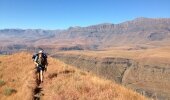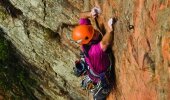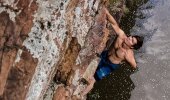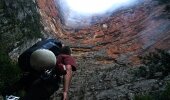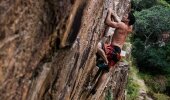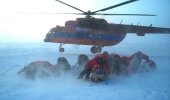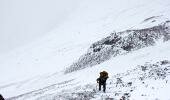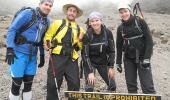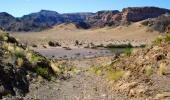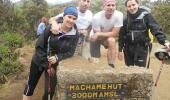Words: Sam Bradley | Photos: Various photographers
Having a brother who works overseas means that opportunities for sibling bonding are few and far between. So when the opportunity arose to spend some time together, we grabbed it with both hands and became tourists in our own city for a day.
Photo credit: Nic Bradley
It turned out to be a great decision: Cape Town is a stunning city to explore, and being locals meant there were many attractions we had ignored for far too long. And so it came to be that on a beautiful summer’s morning we found ourselves at the foot of Table Mountain, ready for a day of adventure.
Towering proudly at 1,088 metres above Cape Town, Table Mountain is the city's most iconic landmark. The mountain is actually a national park and boasts more than 2,000 species of plants (more than the entire United Kingdom), many of which are endangered.
The area is a hiker’s paradise, with many routes of varying difficulty. Walkers can reach the top of the mountain from the city side (Platteklip Gorge is a steep three-hour hike), the Atlantic side (Kasteelspoort or Pipe Track) or the south side of the mountain (Smuts Track and Bridle Path are two of the more gradual ascents). All of the hikes offer beautiful views, but hikers need to be aware that the weather on the mountain is famously fickle and there are many steep cliffs and sudden drops. A frightening statistic: more people have died on Table Mountain than on Mount Everest.
Being a little short of time, we decided to take the easier route to the top via the world-class cable car. With each car carrying 65 passengers, service is quick and the queues move along smartly. The cable car rotates a full 360 degrees during the journey, so all visitors enjoy a panoramic view of the mountain and city. However, the trip to the top wasn’t always this effortless. I was fascinated to discover that the cable car has been operating since 1929. To build it, employees used a temporary pulley rope system and an open box (nicknamed the soapbox) to move between the upper and lower stations. Miraculously, the entire operation was accident free, a justifiably proud record that still stands to this day.
Once at the top it is easy to see why Table Mountain is one of the New 7 Wonders of Nature. We managed to pick a day when the Cape Doctor wasn’t up to its usual view-spoiling tricks, so we were able to take some great photos looking out over the 12 Apostles and across Lions Head and Signal Hill. Out to sea we had a view of Robben Island, and on the far side was Devil’s Peak.
Regarding the interesting name, legend has it that a Dutch pirate named Van Hunks once challenged the devil to a pipe-smoking contest, which is still unresolved and therefore results in a steady stream of clouds pouring over the peak during the summer months.
I would have been more than happy to walk around and enjoy a lunch at the upper station restaurant, but little brother had other ideas. A dare was soon made to tackle the abseiling activity. Needless to say, sibling rivalry kicked in and the challenge was accepted. Before long we were both strapped in and getting a quick introductory talk on abseiling from the guides,
JP and Gilbert.
Photo credit: Abseil Africa
Once all the ropes and harnesses had been fitted and we were ready to go, JP gave each of us a bright yellow bag (our Irish parachutes) that, he went on to explain, worked as follows: if something goes wrong, blow five deep breaths into the bag. Then hold the inflated bag above your head as you sail down and land safely at the bottom. If you are unsure, remember to read the instructions on the label. Seeing the look of incredulity on our faces, he cleared our confusion by explaining that this was a bit of light humour to ease the nerves, and the yellow bags are actually used to transport our harnesses back up to the top afterwards.
Standing at the top, with 112 metres of sheer cliff behind me (and the entire city bowl spread out below that), it was pretty easy to feel weak at the knees. However, next up on the abseil were two British girls, so for the sake of national pride (as well as that of the male population) we boldly leaned back and took that first terrifying step into the unknown. Despite my brain sending me frantic messages that this was illogical and I needed to get back onto that ledge immediately, once I’d taken a few steps the nerves gave way to a sense of enjoyment. With JP holding my safety rope at the top, I could kick off the ledge and bounce down the cliff in giant moonwalking-like strides. Before reaching the bottom, the cliff opens out into a giant cavern. Dangling in the air, we slowly slid down our ropes to solid ground once again. From there it was a short and scenic hike back up to the upper station, which gave us a good chance to admire the views and congratulate ourselves on our act of extreme and daring courage.
What you need to know
Hiking: Table Mountain National Park is run by South African National Parks. For more information, visit www.sanparks.org/
Cable Car: As the cableway is weather dependent, you cannot book a specific time to travel on it. You can, however, buy tickets online to use at a time convenient for you. Tickets can also be bought at the lower station: R215 return for adults and R105 return for children (slightly cheaper if bought online). For more information and operating hours, visit www.tablemountain.net
Cable car maintenance closure: The cableway will be closed for annual maintenance from Monday, 28 July to Sunday, 10 August 2014.
Abseiling: Abseil Africa operates from the upper station. Prices are R695 pp (excluding the cable car) or R850 pp for a guided walk up Platteklip Gorge and the abseil. For more information, visit www.abseilafrica.co.za
Did you know?
Table Mountain is approximately 260-million years old. By comparison, the Andes are about 250-million years old, the Rockies are about 60-million, the Himalayas are 40-million and the Alps are 32-million years old.
New 7 Wonders of Nature
1. Amazon: South America
2. Ha Long Bay: Vietnam
3. Iguazu Falls: Argentina/Brazil
4. Jeju Island: South Korea
5. Komodo: Indonesia
6. PP Underground River: Philippines
7. Table Mountain: South Africa
